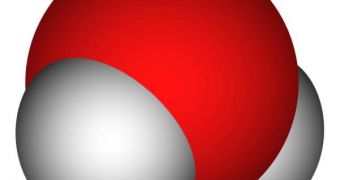The creation of new methods for splitting water into hydrogen and oxygen is paramount for a number of industrial and chemical processes, as well as for various civilian and military applications, but existing methods are very consuming, as far as time, money, and catalysts go. Now, researchers at the Weizmann Institute Organic Chemistry Department have developed a novel way of doing just that, by creating a mechanism and also a device that can separate oxygen from water and bind the atoms in a different molecule. Obviously, this leaves the hydrogen free to combine in other compounds as well.
In a new paper, recently published in an issue of the journal Science, the experts say that they have drawn their inspiration from a process that is the basis of life on Earth – photosynthesis. Through millions of years of evolution, vegetation has learned to take up carbon dioxide and sunlight from the atmosphere and to release oxygen instead, while at the same time producing the energy it needs in order to survive. It was by means of this process that the Earth's atmosphere evolved to a stage where it could support life as we know it.
The process relies on making use of a special metal complex, which the team led by Prof. David Milstein have created in a previous study. Constructed on the ruthenium element, the metal center is surrounded by an organic material, on which water is placed. The entire separation mechanism occurs over three stages. First of all, the support layer and the water are mixed together, which breaks the bonds inside the water molecules and makes one hydrogen couple with the organic part of the substrate, while an OH (oxygen-hydrogen) group binds to the metal part.
In a second stage, the mixture is heated to 100 degrees Celsius, the boiling point of water. At this time, hydrogen gas is generated, and another OH group is added to the metal core. Refining this stage could result in a source of very cheap and clean fuel. “But the most interesting part is the third 'light stage.' When we exposed this third complex to light at room temperature, not only was oxygen gas produced, but the metal complex also reverted back to its original state, which could be recycled for use in further reactions,” Milstein explained.
One of the reasons why the third stage is so effective is the fact that light causes hydrogen peroxide (H2O2) to be produced. But the chemical is very unstable, and it immediately breaks up into water and oxygen, hence the production of pure oxygen. “Because hydrogen peroxide is considered a relatively unstable molecule, scientists have always disregarded this step, deeming it implausible; but we have shown otherwise,” Milstein concluded.

 14 DAY TRIAL //
14 DAY TRIAL //